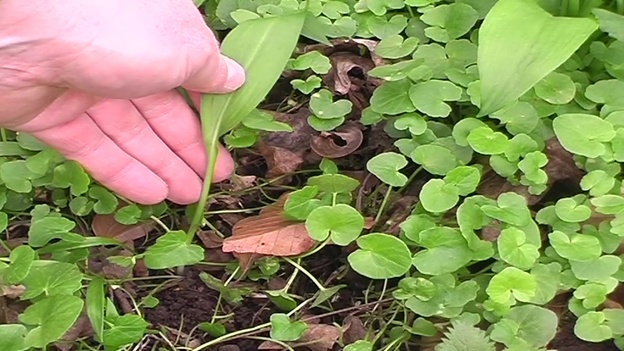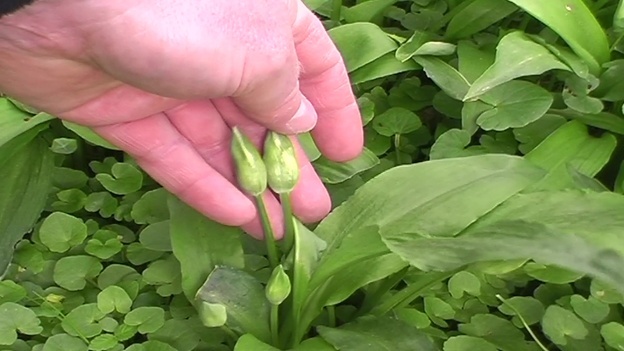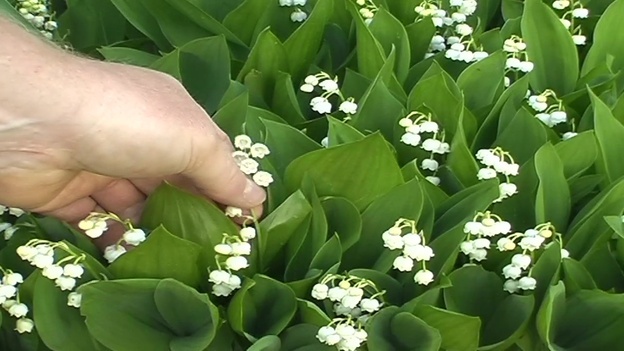VIDEO: How to tell the difference between wild garlic and lily of the valley
Clearly recognize wild garlic
The smell is an absolutely unique characteristic of the wild garlic (Allium Ursinum), but be careful: As soon as you have a leaf of the plant in your hands, your fingers smell of garlic. There is a risk that you will still perceive this scent later and therefore not notice it when you hold a lily of the valley leaf in your hand.
The wild garlic sprouts under deciduous trees at the beginning of spring. At the same time, similar-looking, sometimes poisonous plants also grow. These can stand in the middle of a large field of wild garlic. You cannot rely solely on your sense of smell: there is a strong cloud of garlic in the air and it is difficult to recognize individual plants by their scent.
Difference from lilies of the valley
Leaves andStem: The leaves of the wild garlic grow individually on the stem.

With the lily of the valley the leaves are in groups of two on the stem. They include this. They are darker and harder than the leaves of the wild garlic.
Wild garlic are very tasty herbs. Among other things, you can use it to create wonderful ...

blossom: In wild garlic it grows upwards in a shell. There is a bud on each stem.

The lily of the valley has several flowers hanging from the stem.

Differences to other doppelgangers
The most important and clearest difference between wild garlic and lily of the valley and all other doppelgangers is the garlic smell. If the plant doesn't smell like garlic, it's not wild garlic. But do not rely on it and check other distinguishing features, as you cannot recognize a single poisonous plant in the wild garlic field by its smell.
The poisonous plants like wild garlic, lily of the valley, autumn crocus and Solomon's seal, which is also known as white spice, can easily be recognized by their leaves. Several leaves grow on one stem in these plants. A clear characteristic of the wild garlic, on the other hand, is that a stem grows out of the earth with exactly one leaf on it.
The leaves of the arum also grow individually on a stem. They are spotted and have no parallel leaf veins. You can clearly see the lattice structure of the leaf veins on the underside of the leaves. Since the plant is corrosive, you will immediately notice the difference when you eat it at the latest.
Wild garlic: checklist with the distinguishing features
- Wild garlic always smells like garlic.
- The leaves grow individually from a stem, there is exactly one stem per leaf.
- There is a bud on each stem.
These dangers loom
If you are careful to only harvest leaves that grow on a stem, normally nothing dangerous can happen. The arum can be recognized by the leaf veins and burns in the mouth. A doctor's visit is only necessary if you consume large amounts of it.
The Solomon's seal is slightly poisonous and causes stomach and intestinal problems. The nausea usually goes away on its own. Of course, if you have digestive problems for a long time, you need to see a doctor.
In addition to vomiting and diarrhea, the lily of the valley also causes cardiac arrhythmias. In small doses it is considered a medicinal plant. In any case, consult a doctor, because depending on the previous illness or amount, the plant can be dangerous. This is especially true for children.
It is most dangerous if you eat autumn crocus. Even 50 grams of the leaves can be fatal. The poisoning manifests itself through nausea and vomiting, as well as cardiac arrhythmias. You definitely need to see a doctor.
Don't let that stop you from collecting wild garlic and enjoying it. Just pay close attention to which leaves you are harvesting. With the above-mentioned distinguishing features, you can enjoy the plant without any worries.



